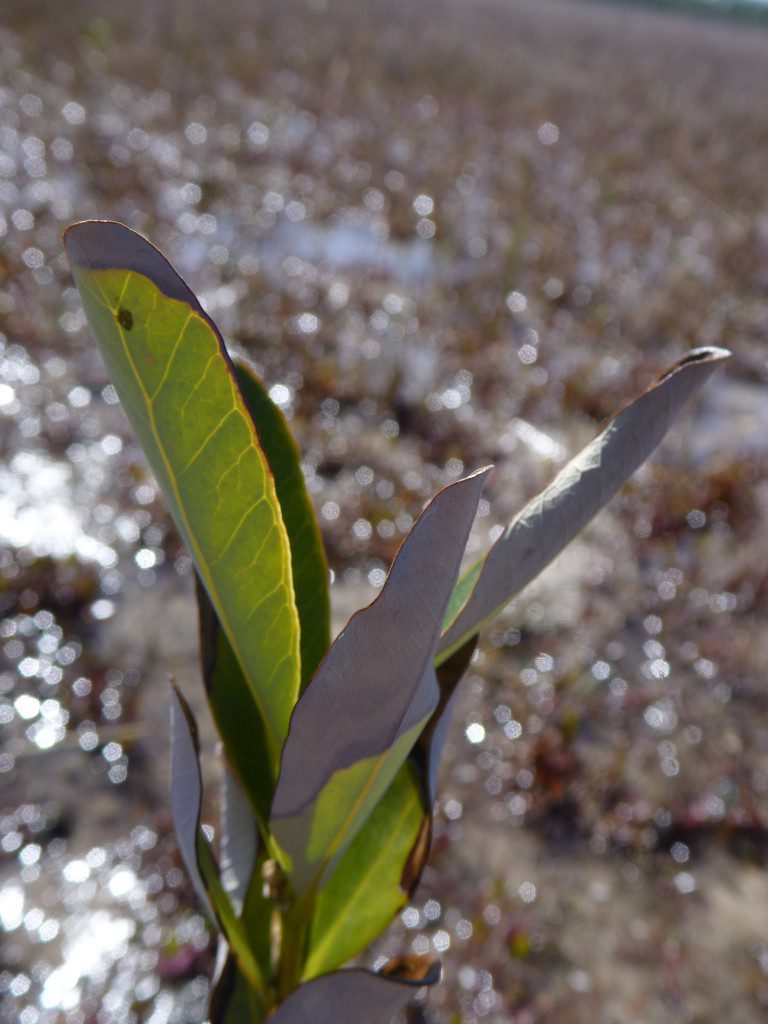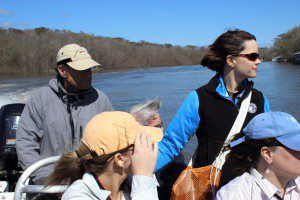Rob Diaz de Villegas WFSU-TV
Wednesday, March 19 at 8 PM on WFSU-TV, catch the broadcast premiere of the new In the Grass, On the Reef documentary: Oyster Doctors.

Although it was a relatively mild winter, one or two harsh cold snaps provided Randall an opportunity to test black mangrove survivorship in north Florida marshes, where it has become a more frequent resident.
Lately I’ve been preoccupied with wrapping up the National Science Foundation grant that funds a lot of what appears on this blog, and thinking about the future of the project. The last major piece of funded content is our latest documentary, Oyster Doctors, chronicling four years of research conducted by Dr. Randall Hughes and Dr. David Kimbro. On the one hand, the show is about learning how coastal ecosystems work. And it’s about how the inner workings of salt marshes, oyster reefs, and seagrass beds provide people with jobs, clean water, and protection from erosion and storm surge. But it’s as much about the ecologists as it is about the ecology.
Randall and David, and their graduate students- Tanya Rogers, Hanna Garland, and Althea Moore– are people who get inspired to pursue a line of research. They get excited by an idea, like predators affecting prey more through fear than through their eating them. They get excited about places. David gets geeked out about predatory snails on Bay Mouth Bar. Hanna falls in love with Apalachicola and wants to figure out its oyster problem. Randall makes observations about things she sees in St. Joseph Bay marshes and it sets her on a path. In one case, that path led her to the video above.
Randall’s interest in black mangroves has unfolded before our eyes on this blog, starting in 2010. These trees have a range that ends to the south and east of here, yet here they were by her study sites. To learn more, she started experiments. Our Oyster Doctor premiere events on March 8 gave her a reason to come down from Massachusetts (she left the FSU Coastal & Marine Lab in January of 2013) and check on her mangrove experiments. These experiments are growing away in the St. Joseph Bay State Buffer Preserve. One of our premiere events was a walking tour of the Buffer and a visit to the experiment site. One reason the trees have been spreading in northern Gulf marshes are the warmer winters we’d been having in recent years. Recent cold snaps let Randall (and a group of interested parties) better see how certain sets of trees in her experiment might survive up here. And so, as we finished the show, which has its section on the mangrove research, we went right back into the field and gained a little extra knowledge. Nature’s inner workings never stop unfolding.

Later that day, Randall joined Apalachicola Riverkeeper Dan Tonsmeire for an excursion within the Apalachicola River delta. Exploring the connection between freshwater bodies and coastal ecosystems has become a focus of this project since we started our EcoAdventures segments.
In the coming months, we’ll get more posts detailing Randall and David’s findings in the studies we’ve been following. And then… well, certainly more EcoAdventures. Through those we can explore all of our area, connecting forests with swamps with rivers and back to the coasts, where this project was born. As people signed up for the premiere and its associated events, we left a spot for people to tell us about their connection to our local wild spaces. I’ll be looking those over as we move forward. I love having a window into what all of you care about. Likewise, this blog has a comments section! Tell us what gets you excited about the outdoors, what you’d like to see more of, what’s not being covered?
Follow us on Twitter @wfsuIGOR
